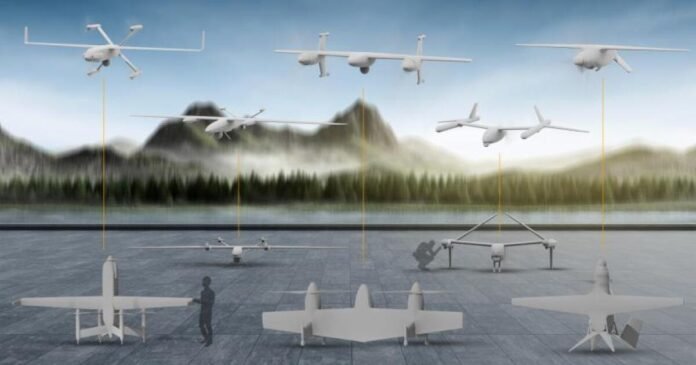In an effort to accelerate the development of military drones, DARPA will this year expedite flight testing of five advanced Unmanned Aerial Systems (UAS) prototypes as part of the agency’s Early VTOL Aircraft Demonstration (EVADE) project.
Recent conflicts have shown how low-cost drones are rapidly transforming warfare, prompting DARPA to seek innovative ways to stay ahead of the technological curve. To achieve this, the agency is shaping the second phase of its AdvaNced airCraft Infrastructure-Less Launch And RecoverY (ANCILLARY) program by prioritizing rapid prototyping and expedited flight testing of Group 3 drones, which weigh 330 lb or 150 kg. The focus will be on addressing issues as they arise during testing, rather than striving for perfection on the first flight.
To advance the initial flights from 2026 to this year, DARPA is concentrating on autonomous systems and payloads, while postponing specific requirements related to maximum physical dimensions and autonomous takeoff/landing capabilities in challenging sea conditions.
One method for accelerating progress is a strong reliance on Sikorsky’s MATRIX technology, which was developed under DARPA’s Aircrew Labor In-Cockpit Automation System (ALIAS) program. This autonomous flight system can be integrated into both fixed-wing and rotary aircraft, managing flight control and navigation for entire missions from takeoff to landing. This capability is particularly vital during extended transit flights, as it significantly reduces the workload for the remote human pilot overseeing the drone.
Moreover, each of the five prototypes will utilize the Naval Surface Warfare Center Dahlgren Division’s payload management software, the Battle Management System (BMS). This system will enable the drones to share information instantly with individual troops as necessary. Each prototype will feature unique designs but will be required to achieve a minimum flight endurance of 12 hours, a range of 100 nautical miles (115 miles, 185 km), and support a 60-lb (27-kg) payload.
“We’re taking a comprehensive approach to evaluate what it takes—considering performance, cost, usability, interoperability, certification, manufacturing, etc.—to ensure we rapidly deliver a game-changing capability,” stated DARPA Program Manager Phillip Smith. “We have five exceptional American companies we expect to be ready to accept and deliver orders at scale within the upcoming budget year.”
“ANCILLARY fills a critical gap, providing operational capabilities comparable to much larger Group 4 and 5 drones to smaller units, including Army, Marine Corps, special operations units, or a ship’s crew. These drones can be deployed without additional infrastructure or equipment, even in austere environments—offering a transformative toolset for warfighters.”






